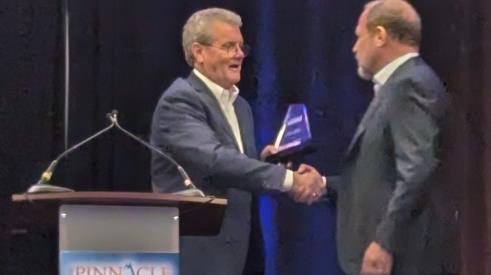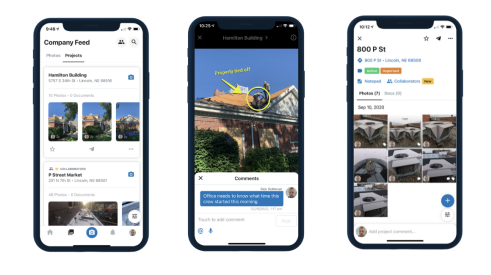To achieve excellence within our companies' cultures, leaders must work hard at keeping healthy relationships. Our communication skills must be a strength, not a weakness. It takes time, energy and effort, but it pays big returns by producing better results and deeply enriched relationships. It's a double win.
Think of it in the context of health: Either take time out to keep living healthy or take time out for sickness. As leaders we must be proactive in building a positive growth culture, being more observant and having challenging conversations when needed.
As psychologist and author Robert Anthony wrote, "You get treated in life the way you train people to treat you."
If we don't like the way someone treats us, we must take personal responsibility to communicate that to the person.
Don't do it in a demonstrative way, but in a way he or she can understand your feelings. Simply say: "I need to discuss something with you that is bothering me, but I am concerned it might offend you. May I share with you what I think? The condition and health of our relationship is important enough to me to bring it up."
In effect, if you don't communicate how you think or feel, then you are communicating (training others) that everything is OK just the way it is. It's easy for you to say that the other person should notice you are upset or feeling taken for granted or whatever the issue may be.
Yes, some people can be unaware of what is going on with others around them. This could be because of their focus on other things, lack of people skills, personality conflicts, selfishness or pride — any number of reasons. Whether the reason is good or bad, they are not mind readers and need to know what is really going on with you. This will provide them with the information and motivation to respond differently in the future.
You may find out it was just a simple misunderstanding. You may find out you were wrong or that an individual is unwilling to change, but at least you addressed the issue and have a clear understanding. It's much easier said than done, but it must be done. Otherwise, the relationship will slowly decay or be destroyed.
A warning: You can take communication too far by being brutally honest to the point of being ugly, saying everything that comes to mind and completely crushing people around you. That is not the goal. Rather, the desired outcome is to communicate effectively and to improve the relationship.
If that is not the perspective from which you are working, then you should cool off first. You shouldn't do something you'll regret by unnecessarily hurting someone or ending a relationship prematurely.
I don't want to candy-coat things either. Sometimes it is absolutely necessary to be blunt. Depending on communication styles, it may be the only way to be heard. It may hurt at first, but when the person has a chance to digest things, typically the response will be a positive one. Better yet, he or she may say, "Wow! I never knew that and I'm glad you told me. I don't want you to feel that way."
Lastly, we need to think about to whom we are speaking and choose an approach that is appropriate for that person, whether an employee, peer or boss. Speak up when needed; preferably meet one-on-one; respect the chain of command; and do it with a caring spirit.
In difficult situations, call a business friend or consultant for advice, but don't let the problem continue to slide. It can then build up and become an explosive situation. As a business consultant once said to me, "It is easier to kill the monster while it is little."R
| Author Information |
| Doug Dwyer is president and chief stewarding officer of DreamMaker Bath & Kitchen by Worldwide, one of the nation's largest remodeling franchises. He can be reached at doug.dwyer@dwyergroup.com. |
Add new comment
Related Stories
Brian Gottlieb Receives Remodeling Mastery Award
Presented by industry icon, Mark Richardson, the award celebrated Gottlieb’s extraordinary impact on remodeling
What's Beyond the Hammer?
Working with Brian Gottlieb on the book Beyond the Hammer provided a masterclass on how to build an aligned team
Real AI Applications For Remodelers
Tech-forward remodeler Michael Anschel shares how he uses artificial intelligence in his business.
How to Eliminate Boring, Languishing Meetings
Leff Design Build ensures maximum productivity and efficiency through these straightforward methods
5 Counterintuitive Strategies to Improve Your Business
Follow these strategies to inspire employees, instill trust, and beat the competition
Couple Act As Much More Than General Contractors
How LBR Partners uplifts and educates their Spanish-speaking trade partners
How to Train for and Run Effective Design-Build Meetings
On this episode of Women at WIRC, Morgan Thomas of LEFF Design Build shares how to maximize your time by creating a culture around effective, collaborative meetings
Pro's Picks: A Real-Time Project Communication and Management Tool
This remodeler says this product allows for easy, quick, real-time communication with team members in the field and in the office
How to Create a World-Class Remodeling Team
Great remodeling companies position themselves for the future with the right players
Everyone Should Have a Number: KPIs for Your Design Build Team
Measuring key performance indicators guides your team to success while creating accountability and ownership












